Choosing pet lizards is a big decision, especially if you have not kept any before now. Whether you want a reptile companion, need pets to instill a sense of responsibility in your children, or even want them for bug control, this article is for you.
So, if you are a beginner and need ideas on which pet lizard to get, then you should read on!
Which are the best lizards for beginners?
While we have several lizard species, not all are suitable for pets. Here are some of the lizard species to keep as pets by beginners;
Leopard geckos
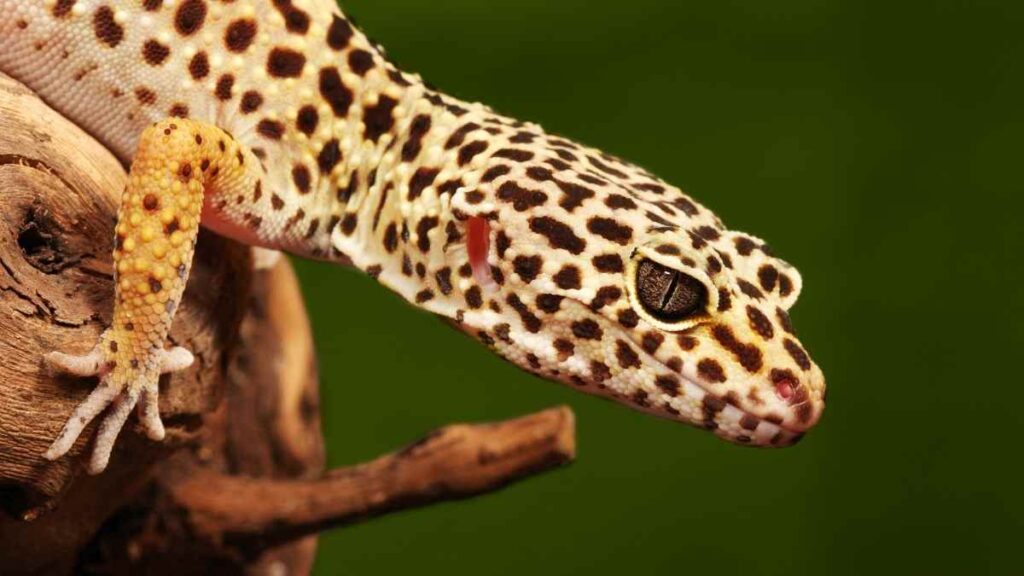
Leopard geckos are great pet choices, especially for beginners. The reason is that they are one of the most widely known pet lizards. Leopard geckos are suitable for beginners because you do not need much to take care of them.
They are easy to tame. Leopard geckos are in various colorful morphs (variations). Unlike many other reptiles, they do not require ample space to house them as the adult geckos only grow to eight to ten inches (tails included). These geckos can live as long as 20 years or more!
Don’t forget to give your leopard gecko an awesome name!
Crested geckos
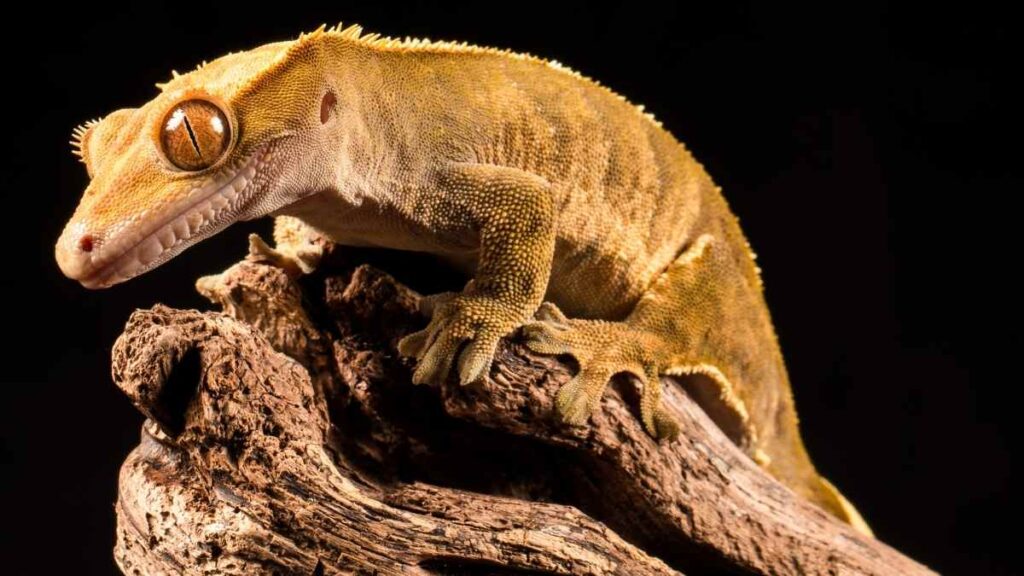
Another reptile you should consider keeping as a pet is a crested gecko. Like the leopard geckos, they are easy to feed. You also would not need to set up different lighting for them; crested geckos thrive well at room temperature.
If your children handle them properly, crested geckos can be child-friendly. Generally, crested geckos are affordable. However, there are rare and expensive ones. They are colorful and adorable. A crested gecko can be seven to eight inches long when fully grown. And their life expectancy ranges from five to fifteen years.
-

Beaded Dragon Fan Exclusive: ‘Original Hipster’ T-Shirt – Wear Your Unique Style with Pride – Unisex t-shirt
£13.00 – £20.50 Select options This product has multiple variants. The options may be chosen on the product page -

Chinese Water Dragon Aquatic Mastery Tee: Dive into Elegance with Our Exclusive Reptile Enthusiast Shirt – Unisex t-shirt
£13.00 – £20.50 Select options This product has multiple variants. The options may be chosen on the product page
Bearded dragons
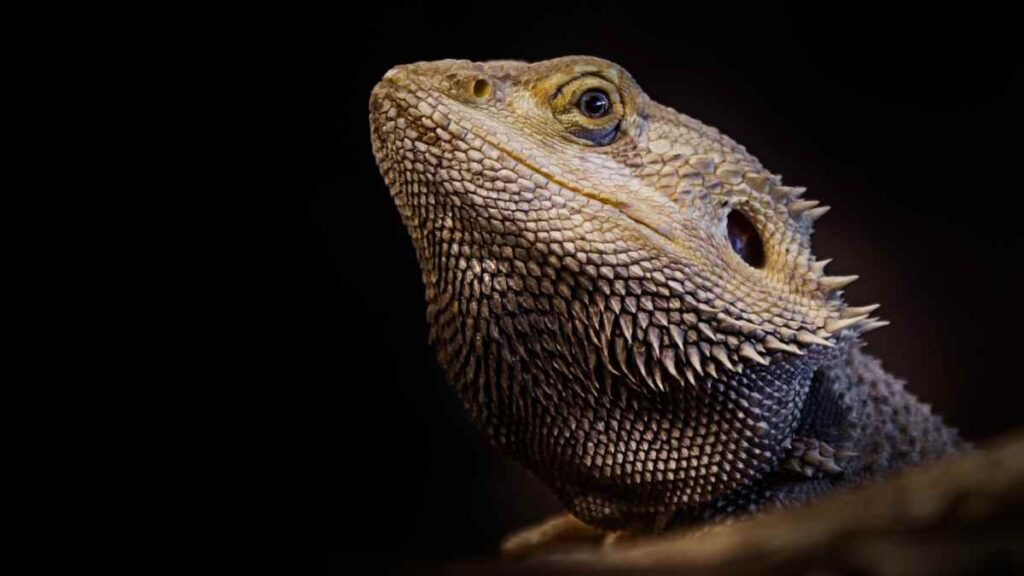
One outstanding characteristic of bearded dragons is that they are diurnal – that is, they are active both during the day and at night. Therefore, you have the freedom to care for them without much stress.
These reptiles are very friendly and easy to handle. So they are perfect for beginners. In addition, bearded dragons are omnivorous, feeding on meat and plants. Thus, their diet can accommodate more comprehensive options.
Additionally, beardies are inexpensive. However, its environment is crucial. Beardies can grow to be pretty big (maximum of two feet). A bearded dragon can live for over ten years, so make sure you give your bearded dragon a name you will not get bored of!
Chinese water dragon
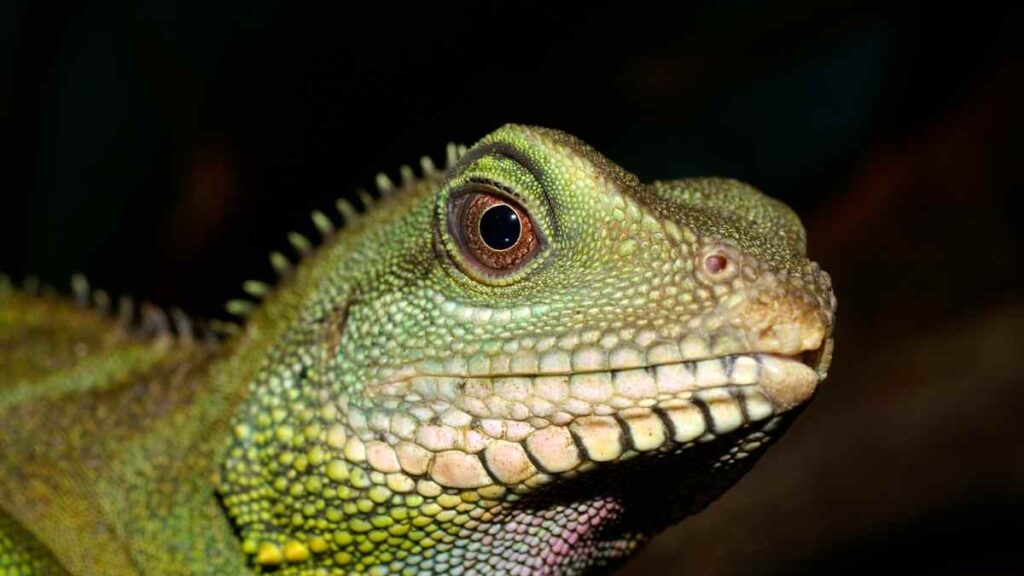
Although a Chinese water dragon may have special needs, tamed dragons make great pets for beginners. They are very intelligent reptiles. However, it would help if you were careful when handling them so you do not stress them.
These dragons can grow as long as three feet. Furthermore, keeping just one Lizard if you are going for Chinese dragons is advisable. However, they are cold-blooded reptiles and require specific environments. Thus, you should research well and make adequate provisions for their enclosure.
Its life expectancy is between ten to fifteen years.
Uromastyx
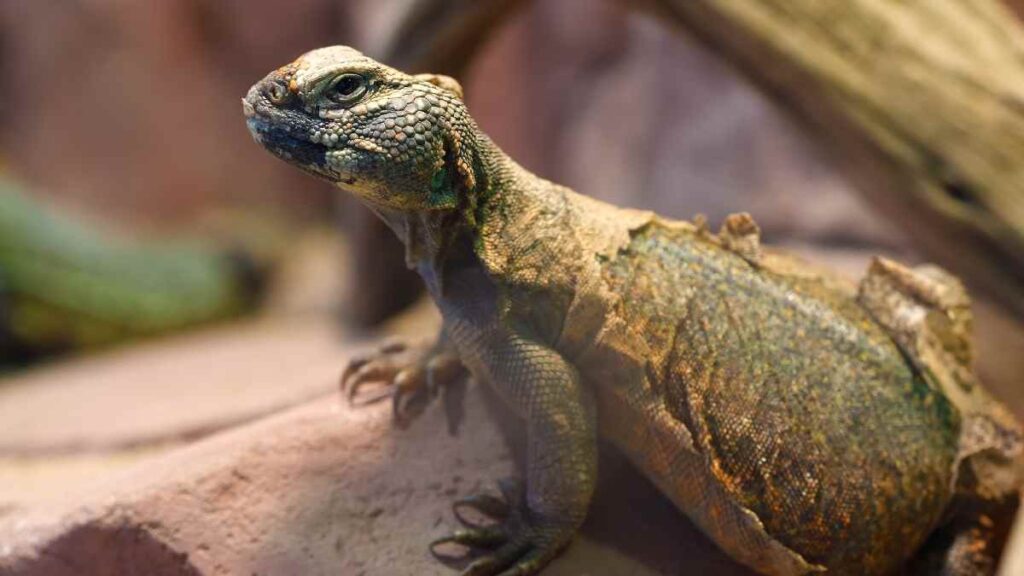
Once you can provide a habitat and food for the Uromastyx, it does not require much ‘special’ attention. Plus, you should handle them less frequently and carefully because they do not like to be handled.
Uromastyx does not require large enclosures or any special lighting. Instead, their menu accommodates wide varieties. If you want a reptile companion as a beginner, Uromastyx is a good choice.
And if you put in the effort, they bond well with their owners and can be docile.
Fire skink
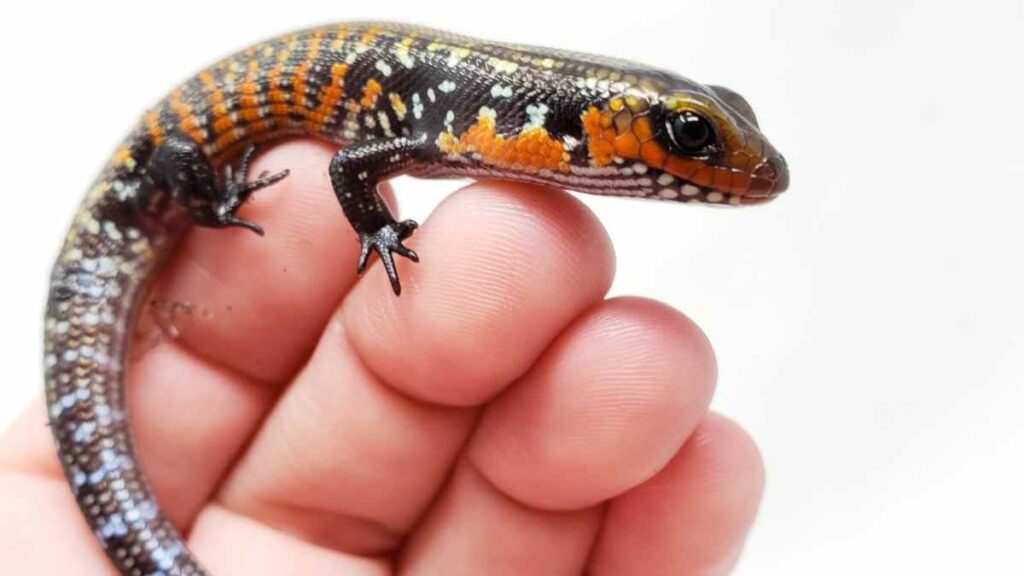
African fire skinks are becoming popular as pets, and rightly so. Besides being gorgeous, they are pretty friendly and easy to care for. The ease of their care makes them perfect choices for beginners – particularly if you have kids.
You need to consider the enclosure carefully, though. The lighting and regulation of the temperature and humidity are among the other factors to consider. A fire skink is good for you if you want to bond with your pets over time, as they can live up to 20 years.
Green anole
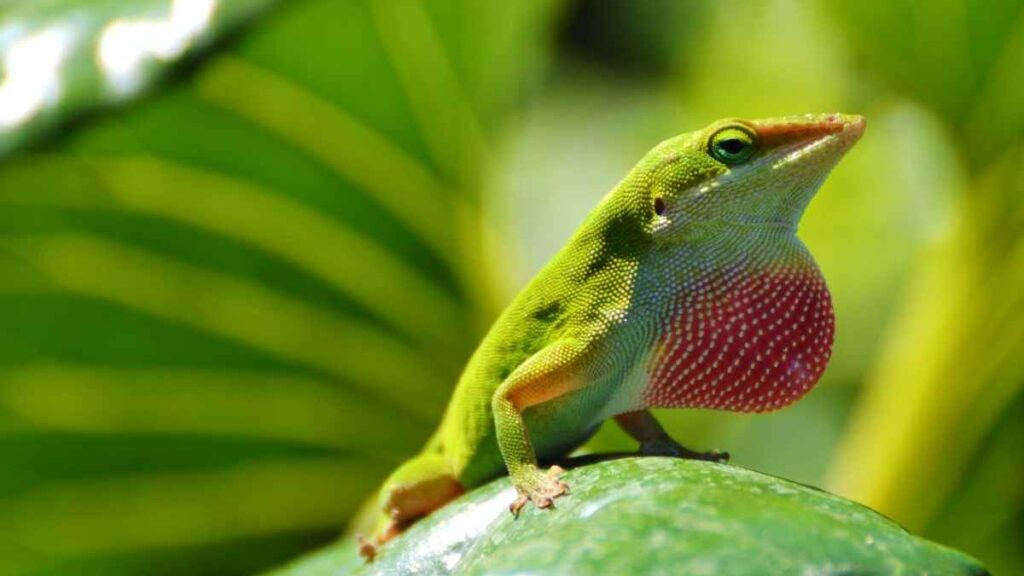
Just like they are small, green anoles do not require much effort to care for them. As a result, green anoles are sometimes considered the best pet lizards for beginners. The reason is that they are widely available, and their maintenance is inexpensive.
You can have more than one anole in one habitat – provided there is only one male among them. If you ever handle the lizards, do not overdo it. They get stressed quickly. Unlike other reptiles, green anoles do not live very long. On rare occasions, they may live up to seven years.
Gidgee skink
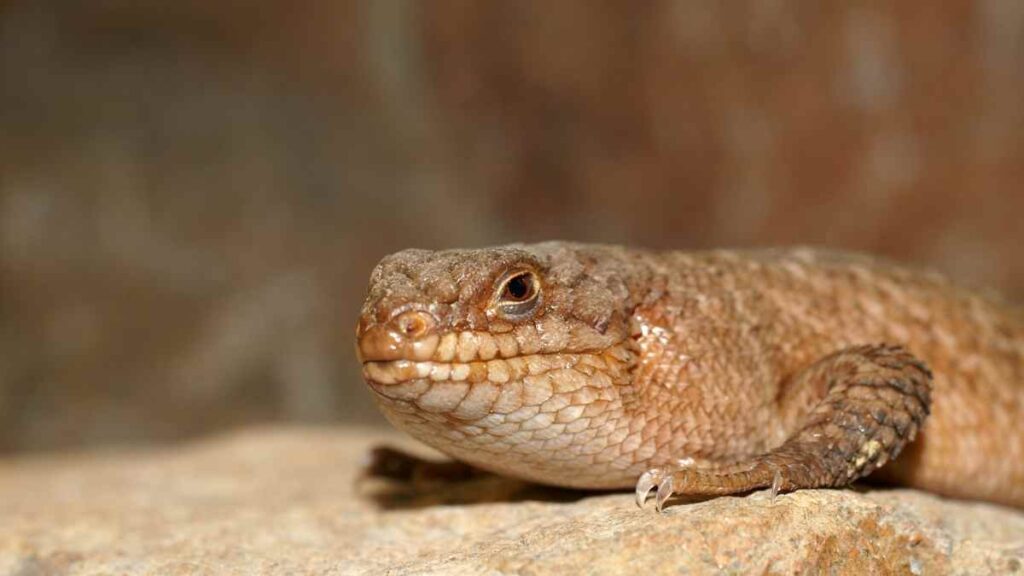
Like bearded dragons, gidgee skinks are omnivores. They are regarded as social because, unlike other lizards, they prefer to live in groups. They can be as long as seven to ten inches when fully developed. To house them, you will need a reasonably large enclosure – like a 40-gallon tank.
Since they are omnivores, you can easily feed them with insects and vegetables. Gidgee skinks do not like to be handled, and they move very fast. If you care for it properly, a gidgee skink can live for over twenty years.
Veiled Chameleon
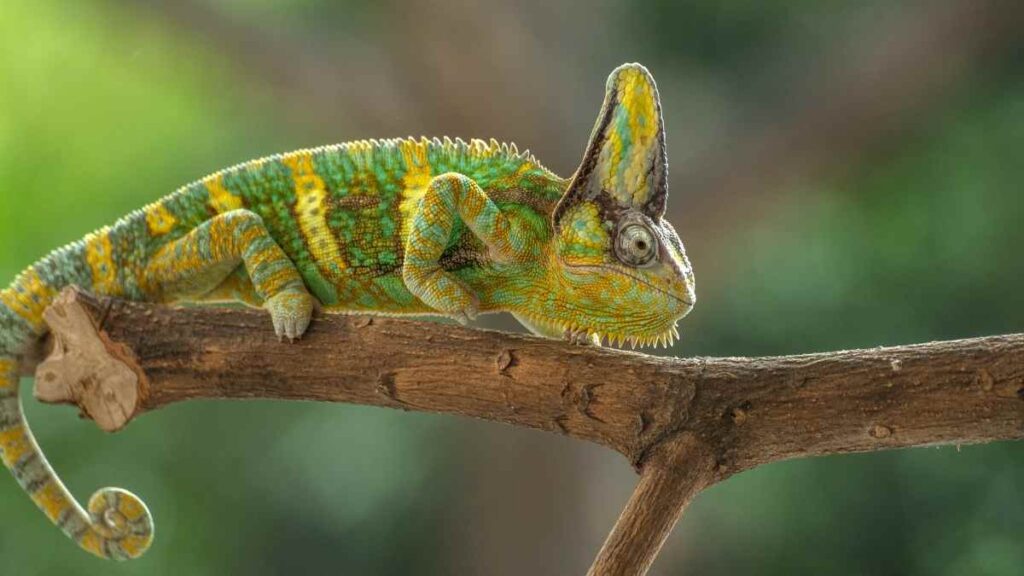
Very few sights are more beautiful and satisfying than watching a pet chameleon change color. You should beware of handling them, though; they prefer to be left alone.
Chameleons do not emit any odor or make noise (except perhaps the rustling of leaves in their enclosure). Chameleons have different species; Jackson Chameleons, Panther Chameleons, and Veiled Chameleons. A Veiled Chameleon is a good choice for beginners.
You should, however, be ready to prepare a suitable habitat for these gorgeous creatures.
Black and white tegus
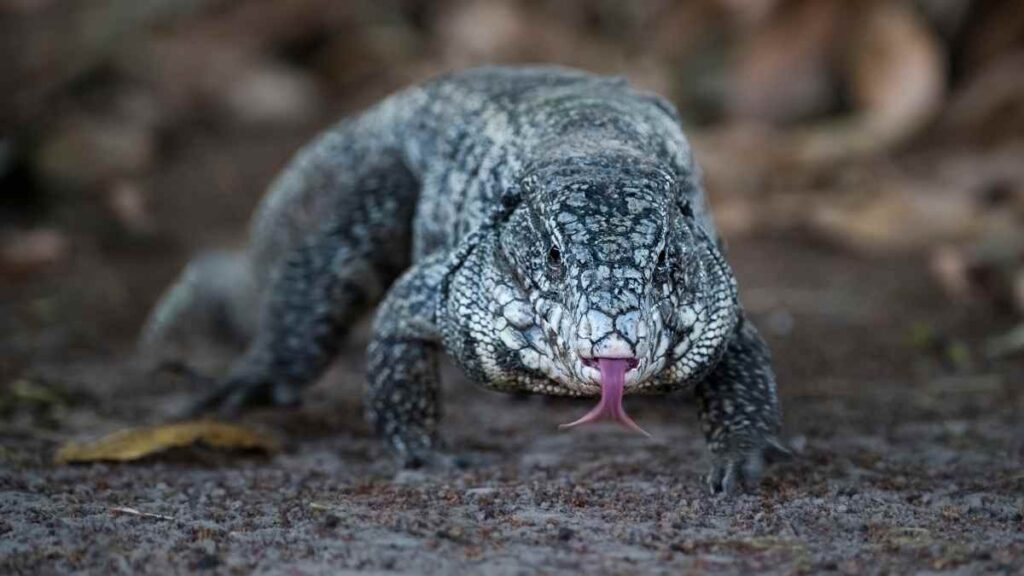
You can handle tegus even if you have no experience caring for pet lizards. Some pet owners regard Argentinian black and white tegus as the tamest lizard species to work with.
Black and white tegus can grow up to three feet long. Hence, it requires more effort to handle than the crested gecko or bearded dragons.
Young tegus feed on bugs, roaches, etc. You can feed rodents, eggs, or fish to the adult ones. Tegus get docile with age. However, it would be best if you were sure your pet wants to be handled.
Blue tongue skink
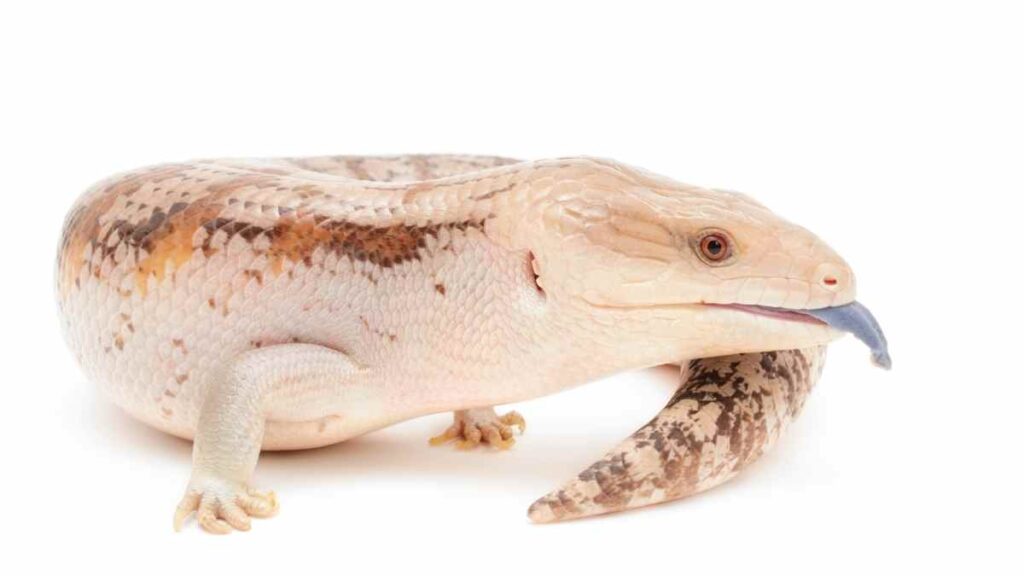
Beginners and families with children can keep a blue-tongued skink because it is friendly, docile, and does not require much maintenance. In addition, unlike most pet lizards we mentioned earlier, blue tongue skinks enjoy handling.
Regarding life expectancy, a blue-tongued skink has a relatively longer lifespan than other reptiles. They can live for as long as 30 years, growing as long as 20 inches. However, avoid provoking them as they can bite or harm humans when they feel threatened.
General Tips on caring for a pet lizard
Whichever one of the pet lizards mentioned above you choose, you will need to care for it. It will also be good to try to get captive-bred lizards because they are easier to tame than wild-caught lizards. Here are some helpful tips on taking care of pet lizards;
- Lighting and temperature regulation (if applicable):
Lizards are cold-blooded. They need heat and UV rays to function well. The heat and temperature requirements vary from species to species. Therefore, endeavor to do your research well and ensure you provide the lighting and regulate the temperature in their enclosures.
If the lighting is not done correctly, your Lizard can have metabolic bone disease.
- Feeding
It would also help if you made efforts to find out what your pet lizards feed on and make provisions for them. For instance, if your lizards relish insects like crickets, you can cut down feeding costs by raising crickets in your home.
Another thing that you should consider is the humidity in the enclosure (if it applies to your pet). If you have all of these sorted, you are good to go.
Wrapping it up
So, if you’re looking for your very first lizard and want to make sure you select a good one that is easy to care for, then any of the lizards on this page would be a great choice.
But if you’re feeling more adventurous and want to learn about some of the other options out there, feel free to explore our website further. We have plenty of information on all different types of lizards, as well as tips on how to care for them.
Thanks for reading!

